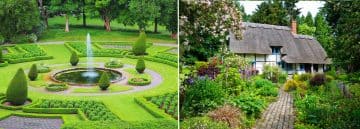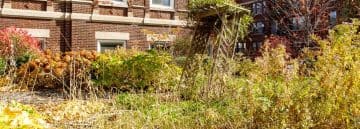
2012/05/exotic-trend-vertical-flower-beds
R2111 – Understanding Garden features, Plant Selection and Planning, 4.1. Understand the characteristics of accepted garden design styles: “Describe the difference between formality and informality in garden design.”
Download our guide to informal and formal garden design here.


Layout In formal gardens, features are identical and plants are arranged symmetrically along the axes, whereas in informal gardens, the layout may appear ‘random’ as in a cottage garden or uses occult balance. Use of Plants In formal gardens, tightly clipped evergreen plants are used, often as topiary while natural growth habit is valued in an informal garden where native plants are often used. Use of Paths In a formal garden, paths are straight with right-angle turns using square cut paving, while paths in an informal garden are random with flowing curves and made from loose materials e.g. hoggin and bark. Water Feature A geometric shaped pool, possibly with an ornamental feature e.g. a statue or a fountain would be suitable for a formal garden, whereas a naturalistic pond with flowing edges and planting e.g. wildlife friendly would be appropriate for an informal garden. Material of Boundaries In a formal garden, brick or mortared stone for walls and prepared timber for fences would be suitable, while in an informal garden local fencing materials in their natural state e.g. Corylus or Salix would be used.